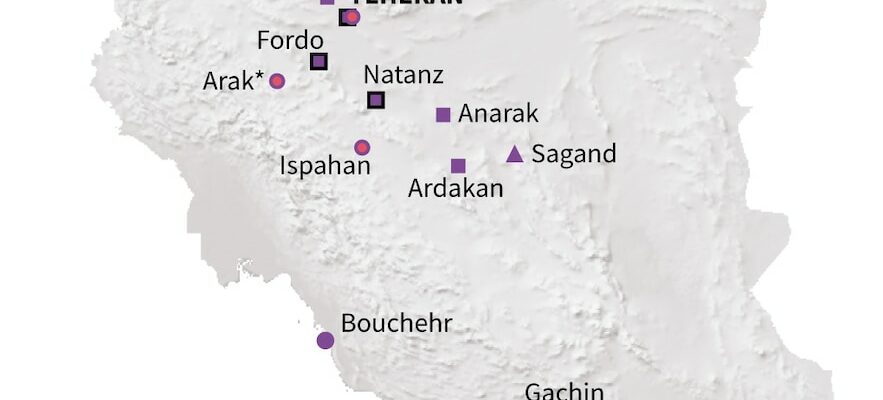“The current situation is not good,” Antony Blinken acknowledged. On Friday, July 19, the American Secretary of State spoke at a security forum in Aspen, Colorado, about the threat of Iran developing a nuclear weapon.
While Tehran continues to deny its intention to build one, the US foreign affairs official estimated that the country had reduced to “one or two weeks” the time needed to produce the fissile materials essential for the production of a nuclear bomb. A statement that echoes recent warnings about the major acceleration of Iran’s nuclear program.
Uranium level already close to military level
The Iranian approach began in 2018. Under the leadership of Donald Trump, the United States then decided to withdraw from the international JCPOA agreement. Signed in 2015, this agreement provided for reducing American economic sanctions against Iran in exchange for limiting its nuclear program to civilian use, such as electricity production.
While Iran remains a signatory to this agreement today, Tehran has been gradually breaking its commitments for three years, as noted by the International Atomic Energy Agency (IAEA). The latter is responsible for inspecting the Iranian uranium enrichment plants declared by Iran: “a surface plant and a larger, underground one, in its Natanz complex, as well as another buried in a mountain in Fordo”, details the Reuters news agency. Depending on the degree of nuclear energy that one wishes to produce, uranium ore must contain a higher or lower percentage of a particular atom: uranium 235. By checking these facilities, the IAEA therefore ensures that this enrichment rate remains low enough to prevent the production of a nuclear bomb.
Nuclear facilities in Iran
© / afp.com/Jonathan WALTER
Although the agency has been limited in its inspection capabilities since 2018, its latest quarterly report for June is clear: Iran is the only non-nuclear-weapon state to enrich uranium to the high level of 60%. A rate well above the 3 to 5% required for civil nuclear power, and increasingly close to the 90% required for military applications. This is the level that, according to Antony Blinken on Friday, Iran could reach in “one or two weeks.”
Capabilities for two nuclear bombs
Meanwhile, Iran appears to be picking up the pace. In June, Tehran informed the UN agency that it would install more enrichment centrifuges at its Natanz and Fordow sites. And it is doing so while continuing to build up stockpiles of this enriched uranium. In the same report, the IAEA estimated that “as of May 11, 2024, Iran’s total stockpile of enriched uranium stood at 6,201.3 kilograms,” well above the 202.8 kilogram ceiling set by the 2015 deal. As a result, the IAEA estimates that the Islamic Republic now has enough material “for two nuclear weapons, according to the Agency’s theoretical definition,” Reuters notes.
However, the process of arming and miniaturizing this bomb to integrate it into a ballistic missile would take longer than simply enriching uranium to a military level. This estimate is, however, much more complex, varying between a few months and a year, because it depends on the level of knowledge of Iranian nuclear experts.
Thus, US intelligence agencies and the IAEA believe that Iran “has been working on some aspects of militarization […] until 2009” as part of a “coordinated nuclear weapons program” officially suspended in 2003, Reuters reports. At the end of March 2023, American General Mark Milley spoke of “several months” needed to achieve this, in an official statement cited by the daily Wall Street Journal.
An uncertain diplomatic path
However, US Secretary of State Antony Blinken wanted to be reassuring on this point on Friday: “They have not developed a weapon, […] But it is something that we are monitoring very closely, of course.” An increasingly difficult task: although Iran insists that it is not seeking to create a military nuclear power, the IAEA’s board of governors denounced Tehran’s lack of cooperation in June.
However, Iran’s acting foreign minister, Ali Bagheri, told US media CNN this week that Tehran remains committed to the 2015 international agreement aimed at limiting its nuclear program. The US secretary of state also reiterated on Friday that the United States favors “the diplomatic path.”
A strategy that has already worked: in the summer of 2023, an agreement between Iran and the United States providing for the release of Iranian funds and the release of prisoners had allowed a clear slowdown in the enrichment of Iranian uranium. However, the prospect of a possible return of Donald Trump to the American presidency in November could dampen the remaining meager hopes.
